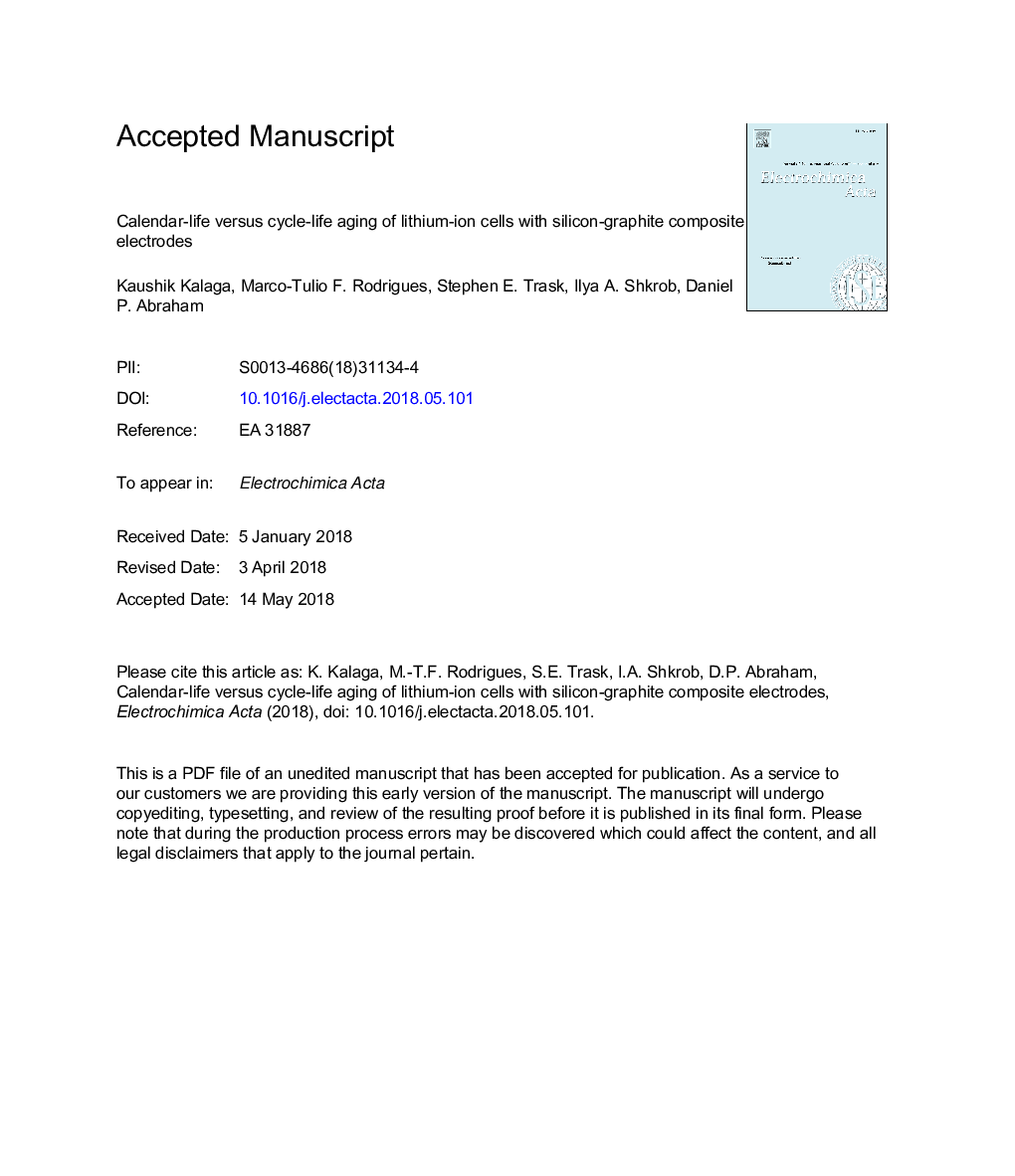| Article ID | Journal | Published Year | Pages | File Type |
|---|---|---|---|---|
| 6602542 | Electrochimica Acta | 2018 | 29 Pages |
Abstract
The use of blended silicon-graphite (Si-Gr) negative electrodes increases the energy density of lithium-ion cells over those containing only graphite (Gr) electrodes. However, volume changes in the Si particles that occur during cycling cause deterioration of the solid-electrolyte interphase (SEI) layer on the particles resulting in further electrolyte reduction that immobilizes Li+ ions and, therefore, capacity fade. Because the volume changes are not expected to occur during a potentiostatic hold (referred to as calendar-life aging), by comparison of cycle-life and calendar-life aged cells one can expect to assess the role of volume changes in the deterioration of cell performance. To this end, cells with Si-Gr and Gr negative electrodes (and Li1.03(Ni0.5Co0.2Mn0.3)0.97O2 containing positive electrodes) were assembled, tested, and compared using cycle-life and calendar-life aging protocols. As expected, the capacity loss of the cycle-life aged cells was higher than that of the calendar-life aged cells. However, the measurable capacity loss for the calendar-life aged cells indicates continued immobilization of Li+ ions. Furthermore, electrolytes extracted from the calendar-life aged cells showed more LiPF6 hydrolysis products than those extracted from the cycle-life aged cells. We discuss possible mechanistic causes for the observed aging behaviors in this article.
Related Topics
Physical Sciences and Engineering
Chemical Engineering
Chemical Engineering (General)
Authors
Kaushik Kalaga, Marco-Tulio F. Rodrigues, Stephen E. Trask, Ilya A. Shkrob, Daniel P. Abraham,
